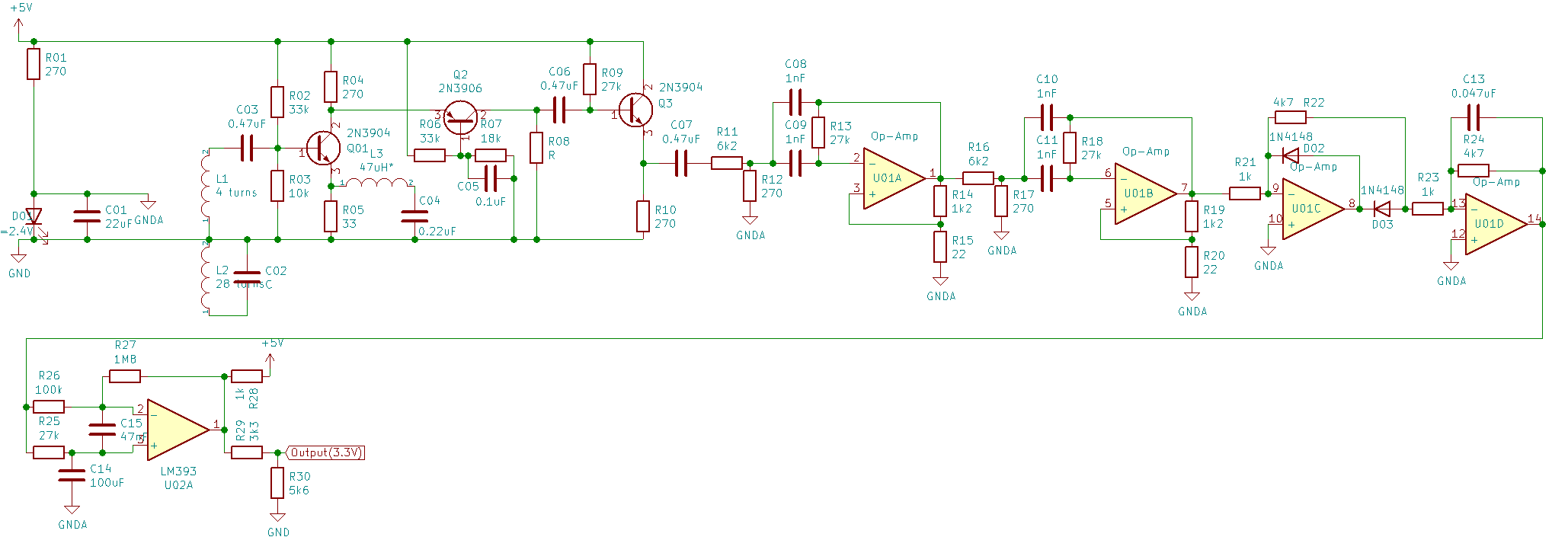A better antenna, folded cascode input amplifier, and a little bit of code yields the current time!
The antenna is simply 4 turns of unshielded, twisted pair cat-3 wrapped in a 40 cm. (15 in.) loop, held together with wire twist-ties. The individual wires are connected to form 28-turn continuous loop, in parallel with a 0.01uF capacitor to tune the loop to 60kHz. The remaining 4 turns are made in to a second loop, where one end is the input to the receiver and the other is connected to an end of the 28-turn loop and ground.
As I twiddled with the simulation of the new input amplifier, the gain was heading toward 40dB, not bad for a 2N3904 / 2N3906 pair. When build time came, the constant-current source in the simulated circuit was replaced with a resistor on the breadboard, with little change in performance.
Trading the full-wave rectifier for a half-wave with a peak detector allows for even more gain. During testing, I had to dial the signal generator to the minimum output to not have clipping at the peak detector. Neither my oscilloscope nor voltmeter could measure the input signal.
Turning the peak detector's output in to a nice 3.3V logic was quite an exercise. Initially, I used a fixed threshold, which worked well enough. Considering the varying nature of the input signal, a variable threshold for the comparator seemed to be necessary. A few days in that rabbit-hole, and things are no better. Finally, I settled on using a simple resistor-capacitor, with a long time constant, to provide the varying input for the comparator.
Here is the current design, with a handy output for 3.3V logic:

I'm still considering turning the gain up little more, along with adding a gain control circuit to the mix. That's for another time, I want to build a Turing machine!
Discussions
Become a Hackaday.io Member
Create an account to leave a comment. Already have an account? Log In.